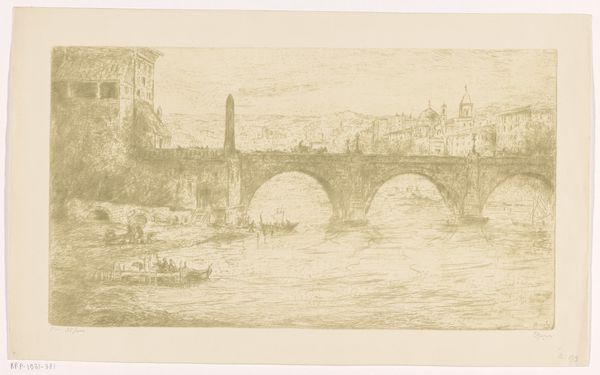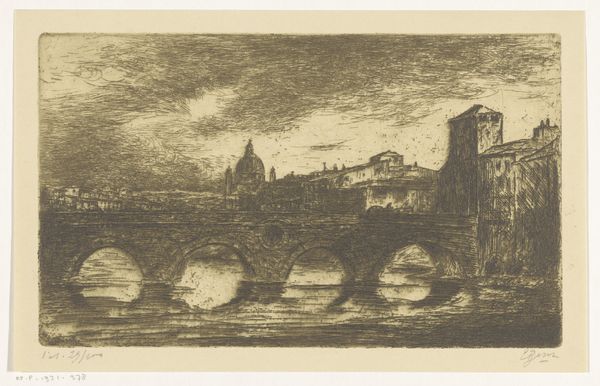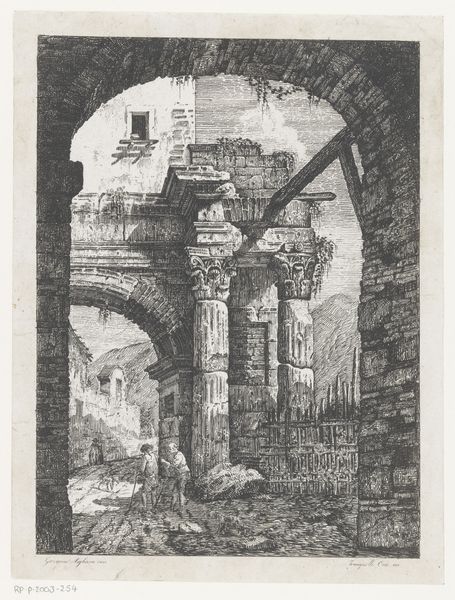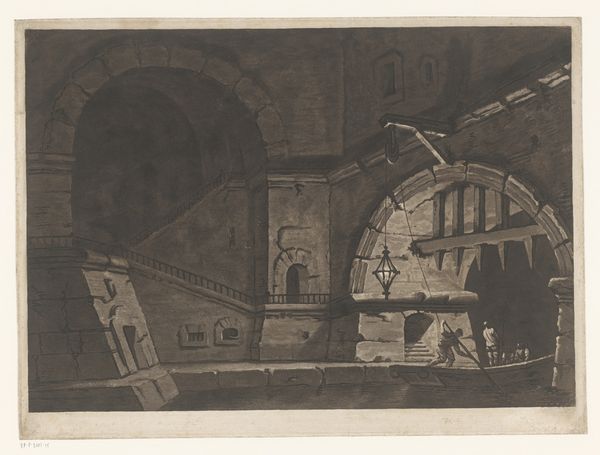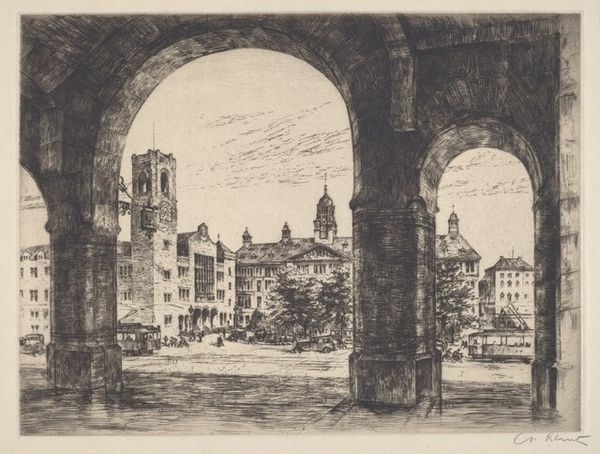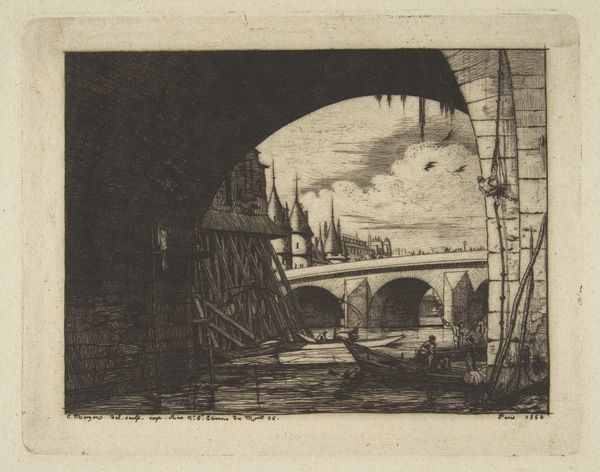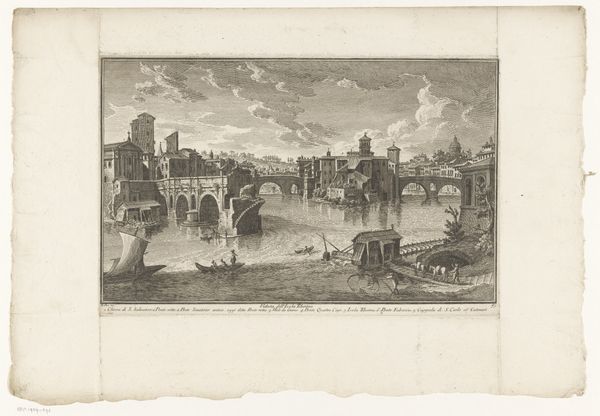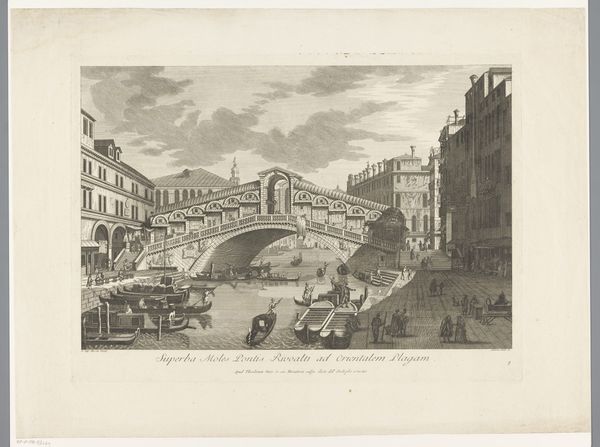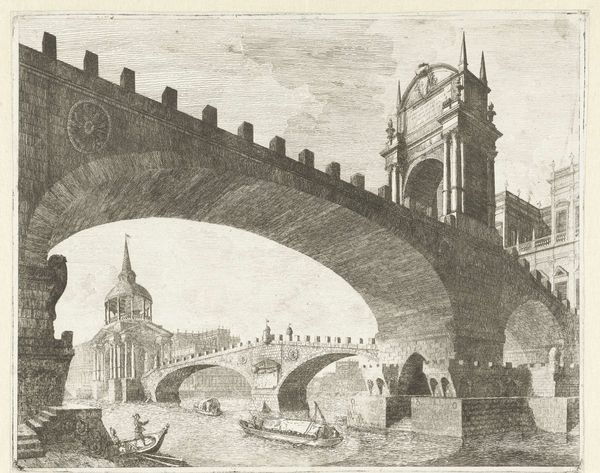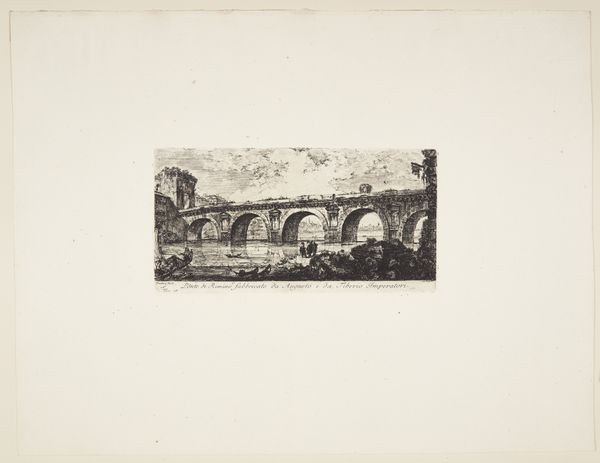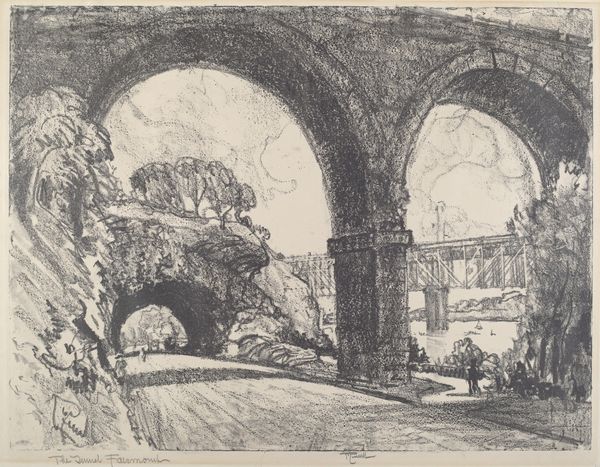
Le Pont-neuf et la Samartaine de dessous la première arche du Pont-au-Change (Pont-neuf and the Samartaine seen from under the first arch of the Pont-au-Change, Paris, after Nicolle) 1855
0:00
0:00
drawing, print, etching
#
drawing
# print
#
etching
#
cityscape
#
realism
Dimensions: plate: 5 3/4 x 8 in. (14.6 x 20.3 cm)
Copyright: Public Domain
Charles Meryon made this print of the Pont-Neuf and the Samaritaine in Paris using etching, a process where lines are incised into a metal plate with acid, then inked and printed. The stark lines and meticulous detail, achieved through careful biting of the metal, create a scene that is both realistic and emotionally charged. The heavy lines that define the arches and buildings are indicative of the labor-intensive process involved, as Meryon had to painstakingly draw each line through a protective ground before etching. Meryon was deeply interested in the urban landscape of Paris, and his prints often highlighted the city’s architecture. The medium of etching, with its capacity for detailed and reproducible imagery, made printmaking an ideal vehicle to convey this changing urban experience to a wide audience. He captured not only the physical structures, but also the social context of his time, including themes of modernization, labor, and urban life. Ultimately, Meryon's technique and choice of subject matter bridge the gap between fine art and the everyday, inviting us to consider the social and material conditions embedded in his depictions of 19th-century Paris.
Comments
No comments
Be the first to comment and join the conversation on the ultimate creative platform.
